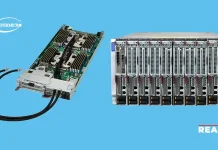The need for quicker, more effective gadgets is growing in the rapidly evolving technology landscape of today. This demand, however, poses a serious problem: how can we control expenses and energy usage while still improving the functionality and performance of our electronic devices?
This is where semiconductor chips come into play. With the global semiconductor market expected to reach an astounding $687 billion by 2025, these chips are transforming a wide range of sectors by serving as the fundamental parts required for everything from computers and smartphones to sophisticated artificial intelligence systems and Internet of Things devices. Let’s see more about this billion-dollar industry.
What Is A Semiconductor Chip?
A semiconductor chip is a tiny electronic device composed of semiconductor materials, usually silicon. It is sometimes referred to as an integrated circuit or computer chip. It is made up of millions, or perhaps billions, of transistors, which are minuscule electronic components that can process and store data, among other things.
These chips serve as the fundamental components of contemporary technology and are found in a large variety of electronic devices, such as computers, smartphones, automobiles, and medical equipment. A multi-step process that includes slicing silicon wafers, printing detailed circuit designs, and adding layers of components and interconnects is used to make semiconductor chips. They have transformed daily life and industries, and they are essential to the operation of our modern world. Some prominent companies involved in the semiconductor industry include Samsung, Taiwan Semiconductor Manufacturing Company (TSMC), Qualcomm, Marvell, Intel, etc.
Also Read: A Beginner’s Handbook to AI Chips
Different Types of Semiconductor Chips
![]()
1. Memory Chips
Semiconductor memory chips store data and programs on computers and data storage devices. Random-access memory (RAM) provides temporary workspaces, while flash memory holds information permanently. Read-only memory (ROM) and programmable read-only memory (PROM) are immutable, but erasable programmable read-only memory (EPROM) and electrically erasable programmable read-only memory (EEPROM) can be altered.
2. Microprocessors
Microprocessors, containing one or more central processing units (CPUs), power servers, PCs, tablets, and smartphones. PCs and servers use 32- and 64-bit microprocessors based on x86, POWER, and SPARC architectures, while mobile devices typically use an ARM architecture. Less powerful microcontrollers (8-, 16-, and 24-bit) are found in toys and vehicles.
3. Graphic Processing Units (GPUs)
GPUs, a type of microprocessor, render graphics for electronic displays. Introduced in 1999, GPUs enhance computer performance by offloading graphics-intensive tasks from the CPU, enabling advanced applications like modern video games and cryptocurrency mining.
4. Commodity ICs
Commodity-integrated circuits (CICs) perform repetitive tasks in appliances like barcode scanners. Produced in large quantities with thin margins, the CIC market is dominated by large Asian manufacturers. ASICs, designed for specific purposes, and FPGAs, customizable ICs, are notable examples. Systems on a chip (SoCs) integrate all components of a system into a single chip, offering extensive capabilities in devices like smartphones.
5. Analog Chips
Though largely replaced by digital chips, analog chips are still used in power supplies and sensors. They handle wideband signals with continuously varying voltage and current. Analog chips include transistors and passive elements like inductors, capacitors, and resistors but are more susceptible to noise.
6. Mixed-circuit semiconductors
Mixed-circuit semiconductors combine digital and analog technologies. Microcontrollers may include ADCs for connecting to analog devices, like temperature sensors, and DACs to produce analog voltages, enabling sound generation through analog equipment.
How Are Semiconductor Chips Manufactured?
![]()
Semiconductor chips are made through a process called semiconductor device fabrication. It’s a multi-step process that involves photolithography and physio-chemical processes to create electronic circuits on a wafer of pure single-crystal semiconducting material, usually silicon.
Here’s a general overview of how the semiconductor industry manufactures chips:
- Wafer Preparation: First, a silicon ingot is prepared. The ingot is shaped and sliced into thin, flat wafers using precision cutting techniques.
- Cleaning and Oxidation: The wafers are thoroughly cleaned to remove impurities. Then a thin layer of silicon dioxide is formed on the surface of the wafer through thermal oxidation.
- Photolithography: The intended circuit patterns are transferred onto the wafer by a sequence of photolithography operations. This entails coating the wafer with a photosensitive substance (photoresist), exposing it to UV light via a photomask, and allowing the pattern to grow on the wafer’s surface.
- Etching: Using the pattern that the photoresist defines, etching is used to remove undesirable material from the wafer’s surface. One can employ dry etching or wet etching.
- Doping: It is the process of adding contaminants to certain regions of a wafer to change its electrical characteristics. Ion implantation is used to achieve this, which involves inserting ions into the wafer.
- Deposition: Thin films of various materials, such as metals or insulators, are deposited onto the surface of the wafer using CVD or PVD. These films are conductive or insulating layers in the chip.
- Annealing: This is performed to activate the dopants and repair any damage caused during the previous processes. The wafer is heated to high temperatures in a controlled environment.
- Testing and Packaging: After fabrication, the wafer is tested to identify any defects or malfunctions. Functional chips are then separated from the wafer through dicing. The chips are wire-bonded to a metal frame and encapsulated in epoxy resin for protection.
Conclusively
Almost every electrical device we use today is dependent on semiconductor chips, which have completely changed technology. Due to its accuracy in managing electrical currents, information and services are now readily available on smaller, faster, and more potent devices. Although it has created jobs and stimulated economic growth, the semiconductor sector also faces issues related to sustainability and environmental impact. Prioritizing ethical behaviors is essential as we push the limits of innovation to make sure semiconductors continue to be a vital component of our contemporary world and shape our future.




